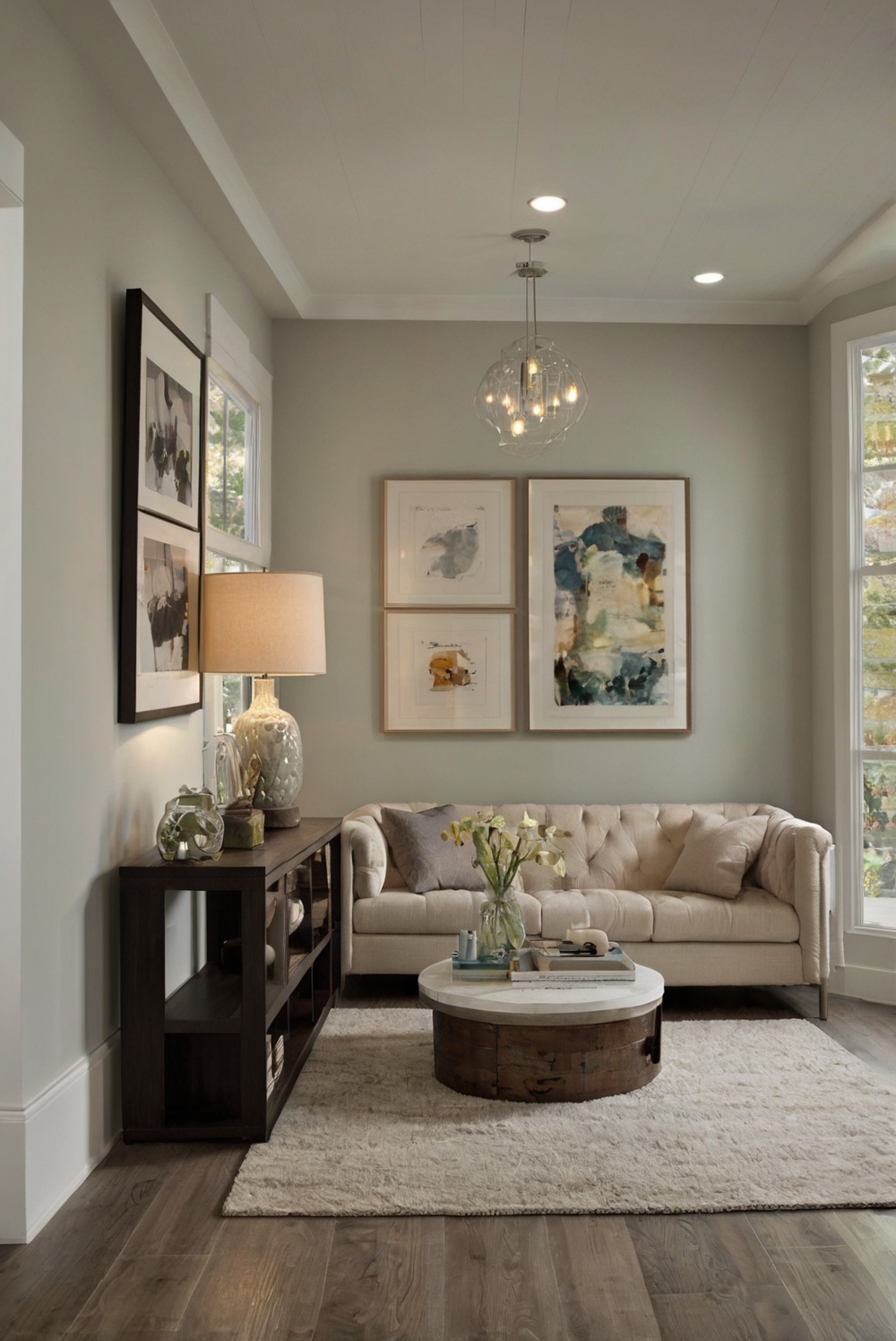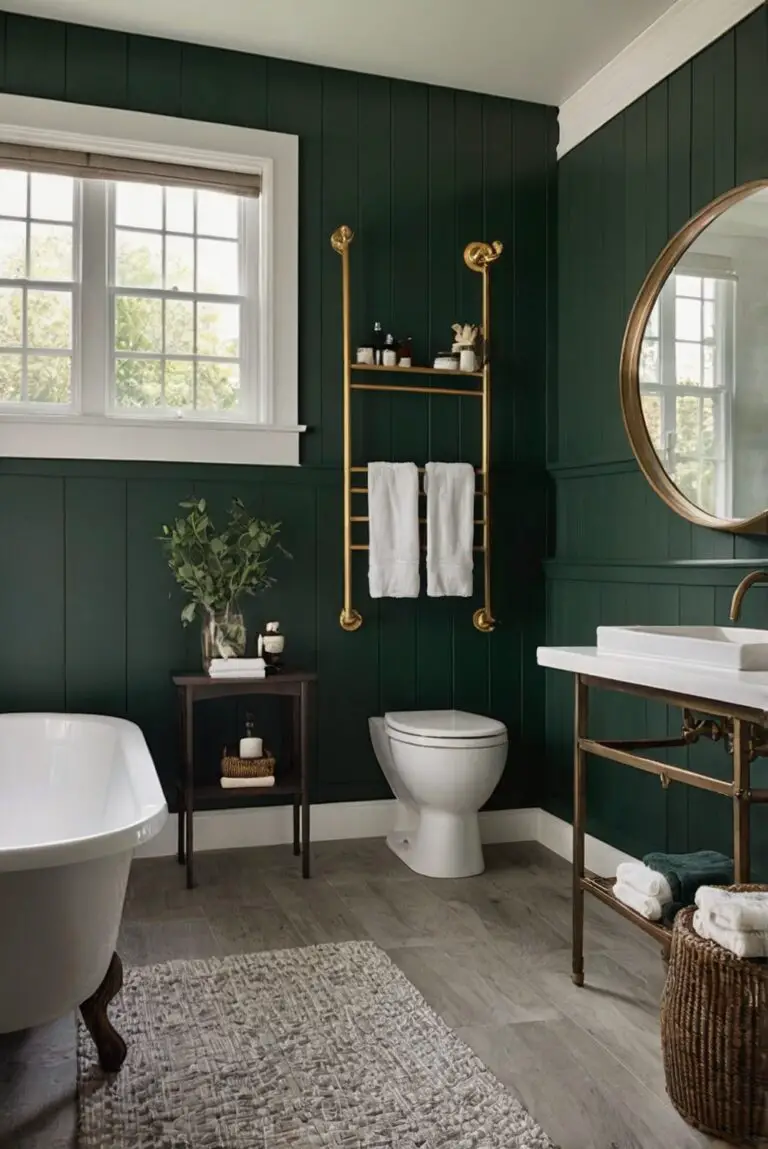Join us for a daily glimpse into the life of an interior designer. Discover the art of selecting wall colors to enhance various flooring choices in your living room!
Choosing wall colors that complement different flooring options in your living room is crucial for a well-coordinated and harmonious look. To start, consider the color palette of your flooring – whether it’s hardwood, tile, or carpet. For dark flooring, opt for lighter wall colors to create contrast and brightness. Light flooring pairs well with warmer wall colors for a cozy feel. Neutral flooring allows for more flexibility in choosing wall colors.
Consider using a color wheel to find complementary and analogous colors for a cohesive look. Additionally, testing paint samples on the walls in different lighting conditions can help you visualize the final result. Always consider the natural light in your room when selecting colors, as it can influence how the colors appear. By paying attention to these factors and experimenting with different options, you can create a visually appealing living room that reflects your personal style.
How to choose wall colors that complement different flooring options in your living room?
My Lovely Spring Paint for 2025
Ready for a Spring Makeover? Explore the Freshest 2025 Paint Trends!
White Sage/Green SW Pistachio green Soft blue Honeysweet/Orange Pink Sugar Sage Tint BMAs an Amazon Associate, I may earn a commission from qualifying purchases at no extra cost to you.
When it comes to selecting wall colors that complement various flooring options in your living room, it’s essential to consider the overall aesthetic you want to achieve. Here are some valuable tips and trend ideas to help you create a cohesive and stylish look:
1. **Light Wood Flooring:**
For light wood flooring, opt for wall colors that create a contrast to enhance the warmth of the wood. Soft neutrals like beige, cream, or light gray can complement light wood floors beautifully. You can also consider pastel shades like soft blue or green for a calming effect.
2. **Dark Hardwood Flooring:**
With dark hardwood floors, you can use bold wall colors to create a striking contrast. Deep shades like navy blue, charcoal gray, or even a rich burgundy can add depth and sophistication to the room. These bold hues can create a sense of coziness and drama in the space.
My fAV Spring DECOR for 2025
Discover Spring’s Best 2025 Decor Combinations – Perfect for Any Room!
Oversized Indoor Plants White Curved Sofas Rugs BOH Brown Cream Moroccan Hype Boho Rug Outdoor Patio Furniture Sets Topfinel Pillow CoversAs an Amazon Associate, I may earn a commission from qualifying purchases at no extra cost to you.
3. **Creating a Cohesive Color Scheme:**
To ensure a cohesive color scheme between your walls and tile flooring in the living room, consider the undertones of both elements. If your tile flooring has warm undertones, opt for wall colors in a similar warm palette like earthy tones or soft orange. For cool-toned tiles, choose wall colors in shades of blue, green, or gray to harmonize the space.
4. **Neutral Foundations:**
Using neutral wall colors like white, beige, or light gray as a base allows you to easily switch up the look of your living room with different flooring options or decor accents. Neutrals provide a versatile backdrop that complements any flooring choice.
5. **Accent Walls:**
Consider adding an accent wall in a bold or vibrant color to create a focal point in the room. This can be a great way to introduce a pop of color that complements your flooring while adding visual interest to the space.
6. **Natural Elements:**
Incorporate natural elements like wood accents, plants, or textured fabrics to enhance the connection between your wall colors and flooring. Earthy tones and organic textures can create a harmonious and inviting atmosphere in your living room.
7. **Lighting Considerations:**
Take into account the natural light in your living room when choosing wall colors. Lighter shades can help brighten up a room with limited natural light, while darker colors can add depth and coziness to a well-lit space.







